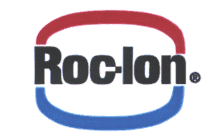Rockland Industries
Rockland Industries, Inc. is a textile manufacturing company and the inventor of coated blackout curtain and drapery linings. The company is headquartered in Baltimore, Maryland and has manufacturing facilities in Bamberg, South Carolina. Rockland Industries has sales in the United States and in more than 90 countries worldwide.

History
The company was founded as Rockland Bleach and Dye Works in 1831[1] by three brothers from England, James, Robert and John Wright, in the Rockland Historic District of Brooklandville, an area of present-day Baltimore, and is recorded as the oldest corporation in Baltimore County. Rockland Bleach and Dye Works produced premier cotton and Irish woolens that were used all over the United States.
The current location of the headquarters and Baltimore manufacturing on Edison Avenue has a rich history, as it used to be Bugle Field. Bugle Field was primarily used as negro league field that was home to the Baltimore Elite Giants and Baltimore Black Sox from the late 1920s until around 1950. It was home to great players such as Roy Campanella and was also the site that several Major League Baseball players were discovered, as Bugle Field was owned by the owners of the former Washington Senators and a local laundering company that has since also closed. [2]
In 1944, Alexander Leaderman, a decorated U.S. Army officer, purchased the company after returning home from WWII and renamed it Rockland Industries.[3] The new company introduced the concept of lining curtains with a specially treated fabric to prevent them from being damaged by sunlight and moisture, much the way linings protect clothing fabric. In 1963, Rockland patented and introduced Roc-lon Rain-No-Stain, the first brand name curtain lining ever produced.[4] The product featured insulation properties, oil and water-borne stain repellency, as well as a UV inhibitor for protection against fading. Roc-lon Rain-No-Stain was awarded the Good Housekeeping Seal of Approval in 1964, the only drapery lining ever awarded that recognition.[4]
In 1966, Rockland capitalized on their success in the drapery lining business by inventing Roc-lon Blackout, the first curtain and drapery blackout fabric that blocked 100% of the light shining in from a window or other light source from passing through. Prior to Roc-lon Blackout, vinyl was used to block out sunlight – however temperature changes would cause the material to crack, peel and turn yellow, and also produce an unpleasant odor.[5] Rockland spent years perfecting the process of applying thin coatings to their materials to produce a soft alternative fabric to vinyl. Rockland marketed its Roc-lon blackout as ‘the un-vinyl’, and it was a commercial hit. Blackout linings and fabrics have become a ubiquitous element in hotel rooms around the world. In addition to its commercial usage, Rockland’s blackout is also used by the U.S. State Department in embassies and consulates around the world, as well as U.S. government and military installations and service academies.
Today, Rockland sells its blackout fabrics and drapery linings to the commercial hotel and hospitality trade as well as to the retail and residential markets. Rockland is the world’s largest manufacturer of drapery lining, with its success based largely on its long-running Roc-lon Rain-No-Stain and Roc-lon Blackout.
Awards
Good Housekeeping Seal of Approval –- 1964
U.S. Department of Commerce 'E' Award for Export Excellence—1992
U.S. Department of Commerce 'E Star' Award for Export Excellence –- 1995
References
- ↑ Baltimore Association of Commerce
- ↑ http://www.kilduffs.com/Sports.html
- ↑ Alexander Leaderman, 80, Industrialist, Philanthropist (November 8, 1999). The Baltimore Sun
- 1 2 The Name Behind the Lining (March 1998). Drapery & Window Covering Magazine
- ↑ Schneider, Eric. Post-Leaderman Rockland Diversifies, Introduces New Products (December 12, 2000)